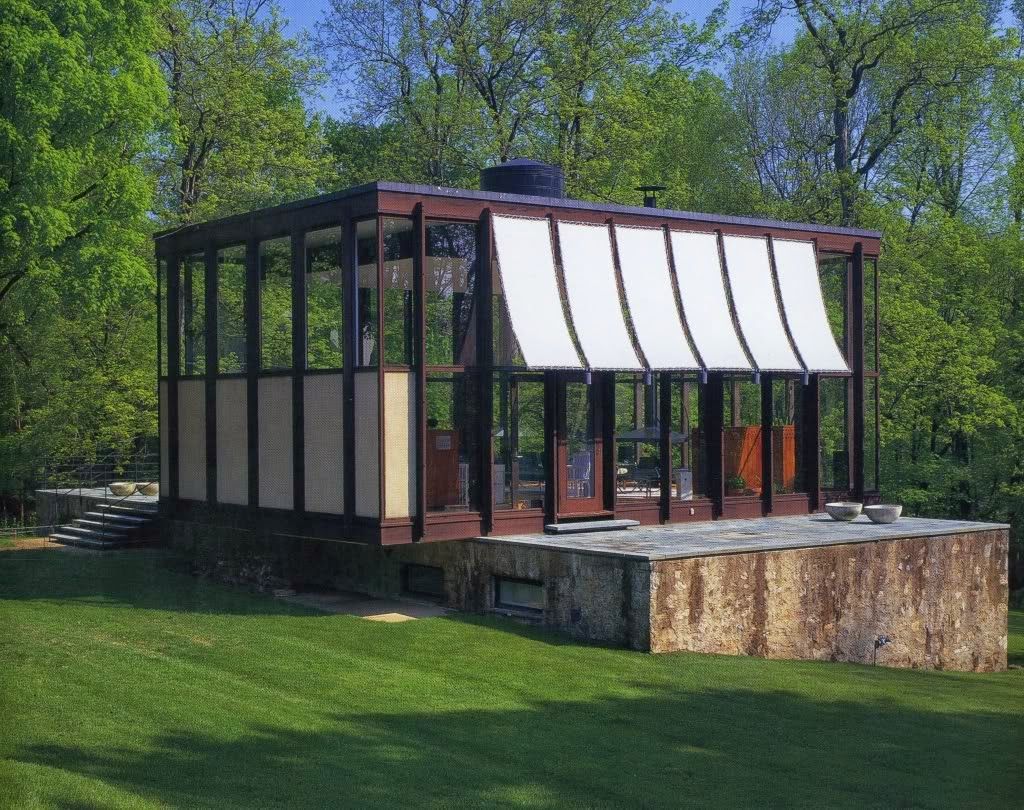#12374. Glass pavilion on stone base: transparent facade in dialogue with nature
The architectural object presented demonstrates an excellent example of a modernist pavilion inspired by the ideas of minimalism and transparency. The structure is a glass rectangular volume installed on a massive stone base, creating an expressive contrast between the lightness of the upper part and the solidity of the foundation.
The facade of the building is designed in a laconic style using a clear rhythm of vertical dark posts forming a structural grid. The southern side of the pavilion is particularly notable, where white awnings or blinds protect the interior from direct sunlight. This is not only a functional element but also a bright accent in the overall composition of the facade.
The lower part of the building is partially made of opaque panels, which likely conceals technical rooms and creates necessary privacy, while the upper part is maximally open to the surrounding nature. A technical element is noticeable on the roof — possibly a water tank, which emphasizes the functional approach to design.
In your own home, similar techniques can be adapted through the use of contrasting materials, creating a transitional zone between nature and interior with large glazed surfaces, and integrating functional sun protection elements as an important part of the architectural expression of the facade. Using an elevated base can also be an effective technique for creating a visual accent and better view of the surrounding landscape.
